


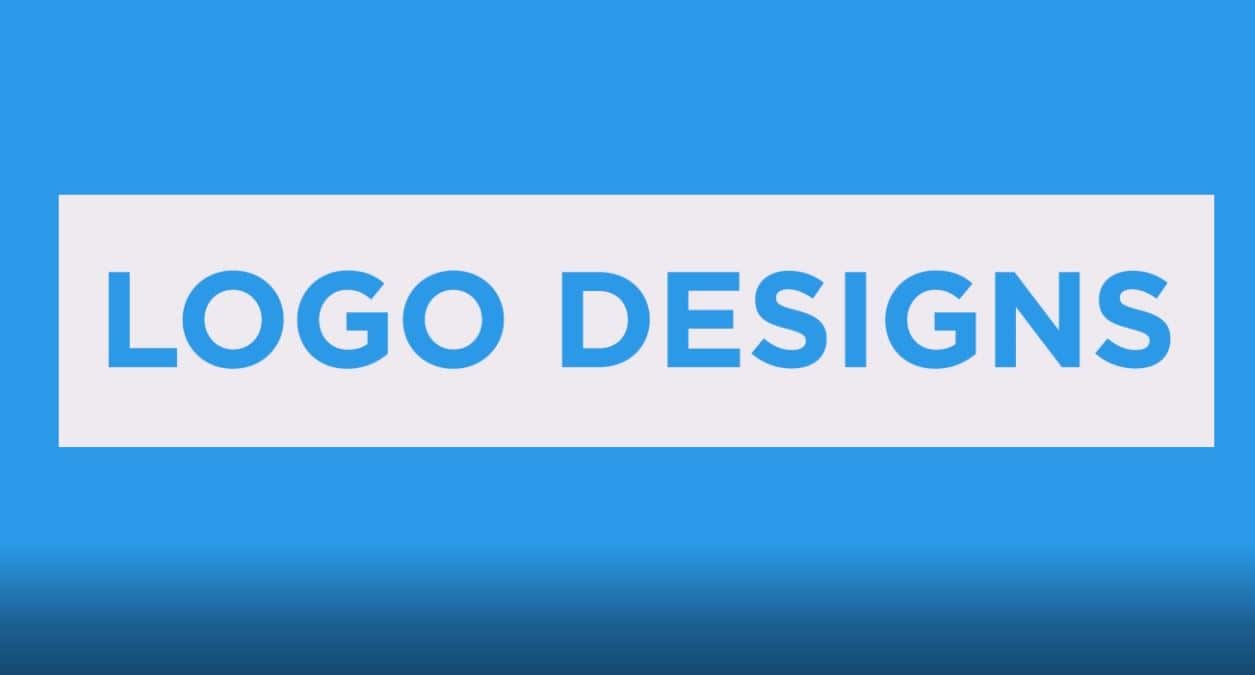
Our Top 10 logo designs we created this year (so far) In no particular order 😊
Let us know what you think
#logos #logodesigner #logodesigners #digitalmarketing #besuperlative #branding
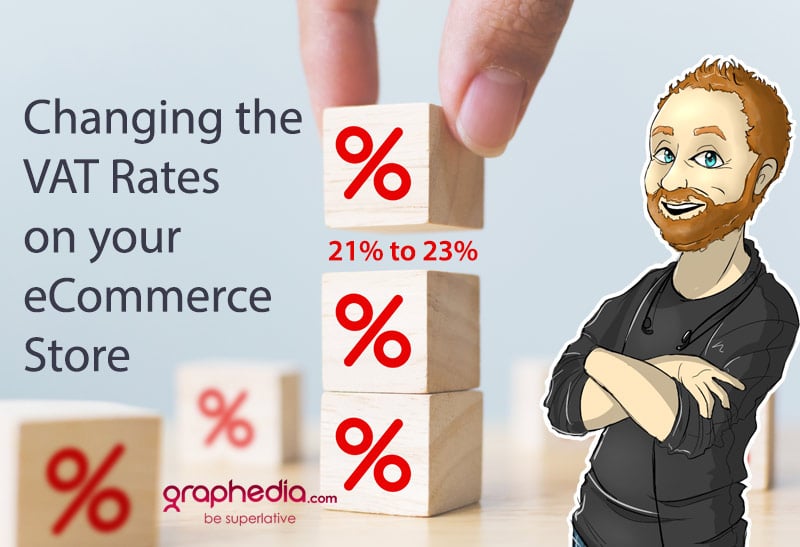
Log into the backend of your WordPress website as you normally would.
On the left-hand menu go to your WooCommerce settings page
WooCommerce > Settings
On the General Settings tab, check to see if Taxes are enabled. If taxes are not enabled (if the checkbox is not ticked) you have nothing to worry about and you can ignore the rest of the tutorial.

If Taxes are enabled, you should be able to see and Tax tab within the settings, click this to view the tax settings and continue with the tutorial.
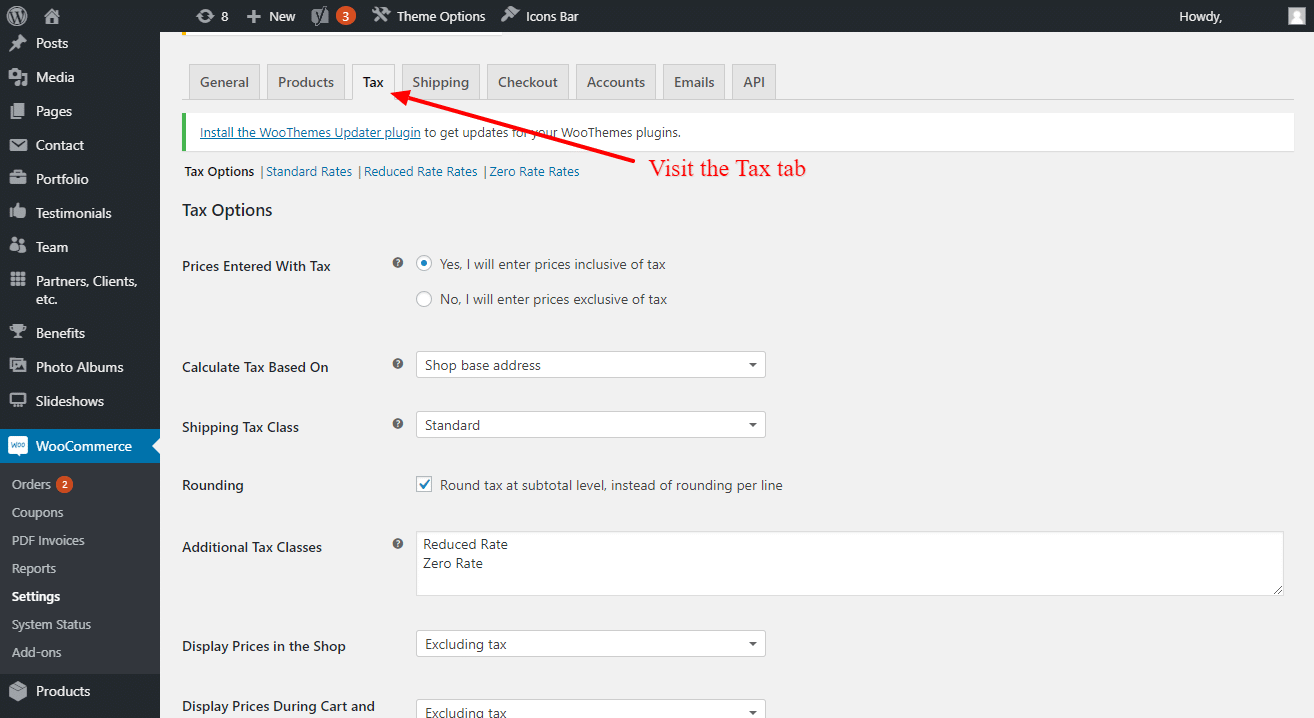
Note: If your products are priced excluding VAT, changing to the new VAT Rate will change the final price of the product. If your products are priced inclusive of VAT, changing the VAT rate will have no bearing on the final product price on the website.
There are two ways which taxes might be enabled on the site, below is the explanation of how to change the rates depending on the way taxes were implemented
Scenario A:
If your website has one tax rate, this can be found (and changed) by clicking on the Standard Rates tab.
The Rate % can be changed here to 23% and then the change saved.
Once this is done, the new tax rate will be visible throughout the various pages on the website.
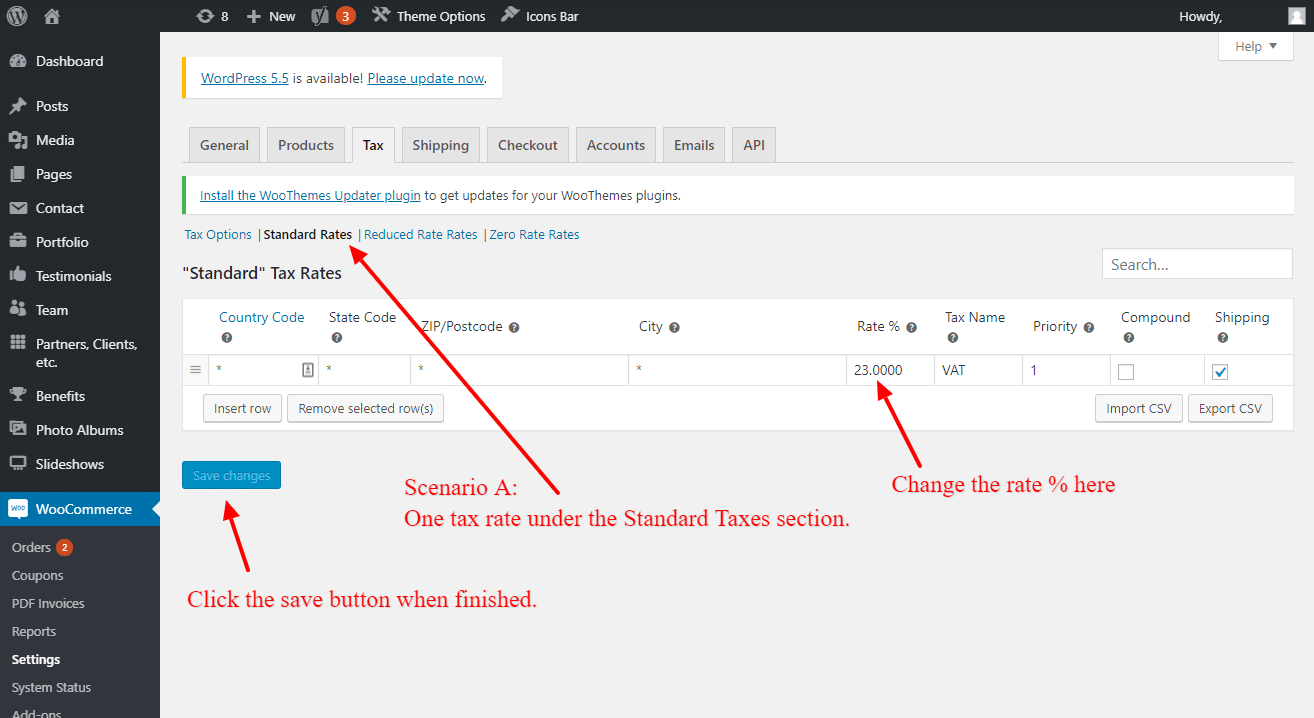
Scenario B:
If your website has more than one tax rate, for instance if you sell to multiple countries and wanted the option to change the tax rates for each, the process is similar to the above but you will have to change the rate in multiple areas.
Click the Standard Rates tab and change the Rate % along with the Tax Name for each row in the table that this applies to.
In this instance, we have another Tax rate section and a Shipping Taxes section, we need to change the Rate % here also and the tax Name as required. We can implement the same process as before and then save the changes.
Once changed, the rates will be saved to the site and this will be reflected on the site.
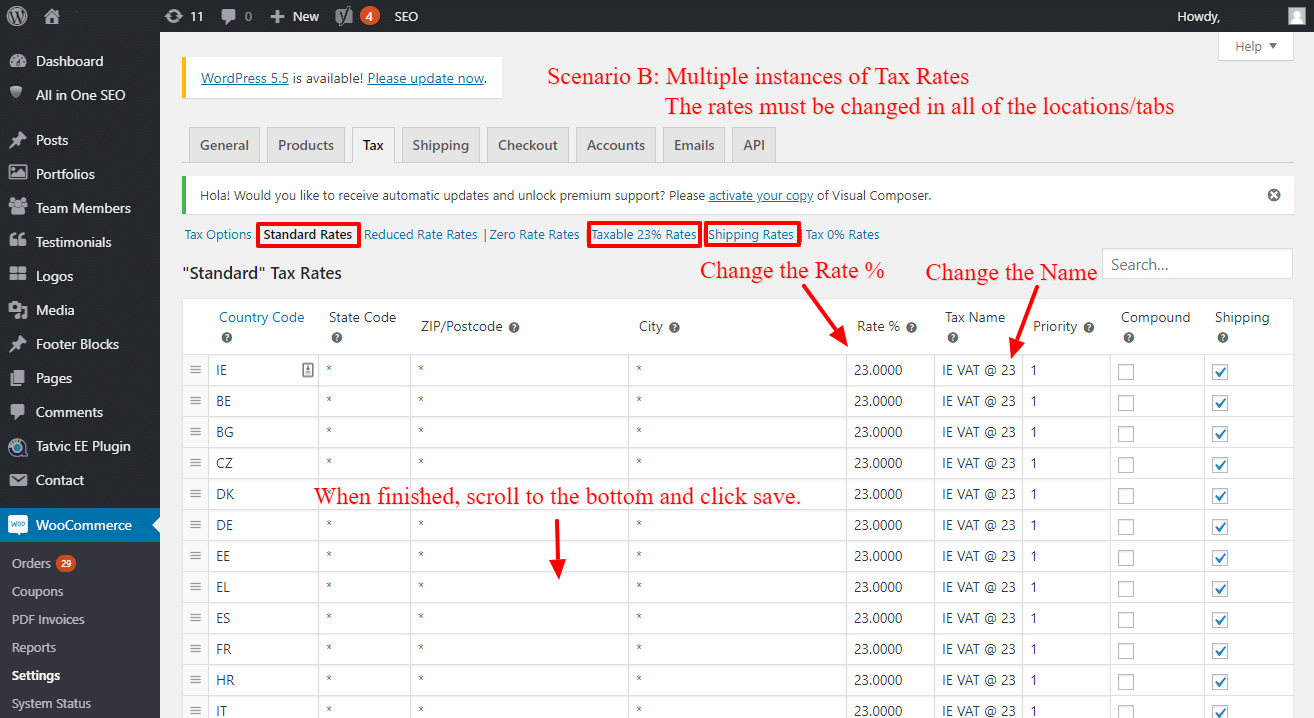
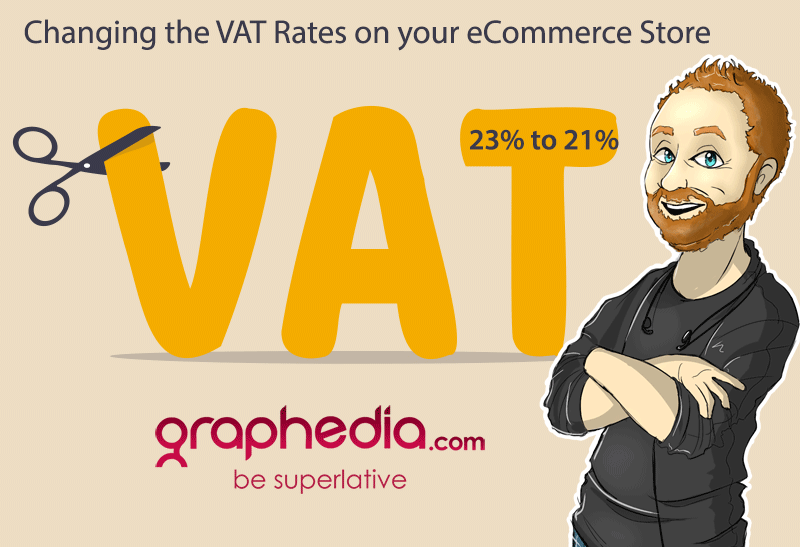

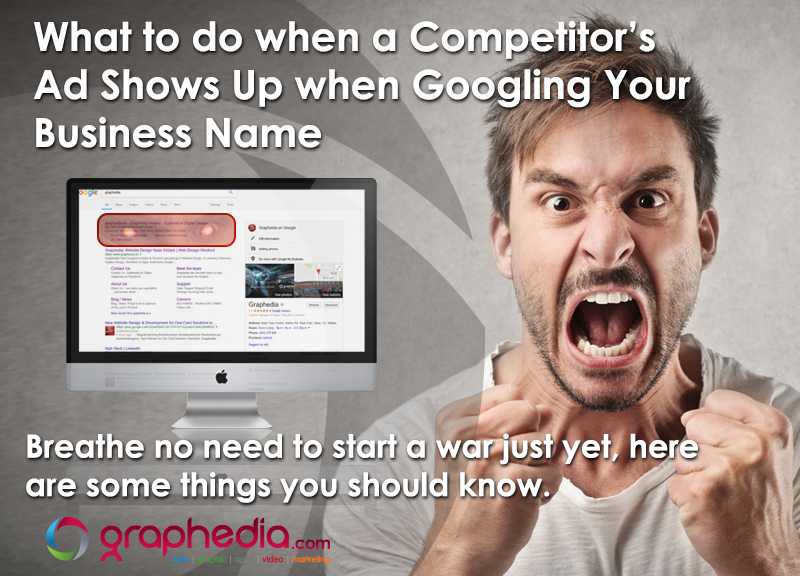
A competitor bidding on your company’s name as a search term is frustrating, but it is entirely acceptable by Google.
What can you do if your competitor’s Google ad appears whenever a customer does a Google search for your company’s name?
It depends on the situation. Are they paying for bids using your name as a search term for their ad, or are they paying for your name AND using your business name in their ad? These are two very different things and clarifying which they’re doing will show you what you can do to rectify the situation.
If your competitor is not actually using your name in an ad, but is only bidding on a search term using your name, Google will do nothing. Google’s position is stated on the AdWords website. It reads, “Google will not investigate or restrict the use of trademark terms in keywords, even if a trademark complaint is received.” However, if your company’s name is trademarked, and your competitor is using it in their actual advertising, there are things you can do to rectify the situation.
The first thing you can do is to complete a complaint form with Google, at this link:
https://services.google.com/inquiry/aw_tmcomplaint?hl=en-GB
Google are very responsive and will deal with your issue very quickly.
Before you do that, however, make sure you have a valid case to file a complaint. You’ll want to read through the rest of this article, and then take a look at Google’s trademark policies at this link:
https://support.google.com/adwordspolicy/answer/6118
Competitors are allowed to bid on your company’s name and/or brand, but they shouldn’t be using it in their ad copy, pretending to be you. The only time they can use it is when they are a reseller of your services or goods. This is called “pawning off” (to get rid of or pass off, usually by deception) and is a parasitic thing to do. In this case, you can submit a complaint to Google (they will sort it out very quickly) or you can take legal action (not so quick, but pawning off is a serious issue, so you may want to take more decisive action).
In some cases, your competitor may not aware they are doing it. This can happen if they have “broad match” switched on in their ad campaign. For example, if your company’s name ends with a generic word, like solicitor or gardener, it simply means they are paying for anything with the word solicitor or gardener in it (like Graphedia Solicitors). They are probably just paying for everything containing the word, solicitor. They are probably not aware they are doing it, unless they check all searched words in their adwords account. Most companies don’t know all the ins and outs of AdWords. In this case, a courtesy email asking them to add your name as a negative keyphrase would stop this from happening.
On the other hand, if they are paying for your business name, and your name is quite unique, like Graphedia, for example, then, you are most likely dealing with a parasite. Your competitor is looking to take business from you. This happens to many and, yes, it has happened to us. It doesn’t just happen to big businesses either. It happens to small business owners, as well. In an odd way, it’s kind of a compliment. It means your competitor sees you as a threat. Should you be honoured? Not really. It took hard word to get where you are!
Now, wait just a minute. There is no need to jump to number four just yet. We want to avoid starting a war right away, no need to go Al Capone on them! (Enjoy video below please note they use bad language :)) but keep reading below
1. Send a letter or make a phone call
This should be your first option. Either telephone them or send a letter asking if they are aware of what they are doing. This is always the best approach, but it isn’t always done. Why would you do this? They obviously know what they are doing. It’s called professional courtesy and is a good place to start.
2. Pay for your own name on Google
Unfortunately, to stop it instantly you should start bidding on your own name, because it is your name, after all, and your website references your name. You will have a higher quality score and, in turn, not have to pay as much as your competitor for the word. We have done it ourselves, and have put some entertaining ads there.
3. Pay for their name
You can approach this tit-for-tat, but, to be honest. I really see it only causing a higher bounce rate in your analytics. If someone is looking for you they will normally jump out of a site that doesn’t have your branding on it. On the other hand, however, some marketers might recommend you should be doing this. To be honest, the logic behind this trend seems sound. After all, if someone is typing in a competitor’s business name, they are interested in what your competitor has to offer, right? That means they are probably interested in what you have to offer, as well. While we’re not necessarily advising you to sink to the pathetic depths your competitor did when purchasing your name, we’re also not telling you NOT to. That’s more an ethical issue than a marketing issue. And by “ethical,” we mean, if you don’t use their name as a search term, you can claim to be taking the moral high ground to anyone who asks–or those who don’t ask, but you just happen to tell!
4. Start a war

One serious downside to bidding on a competitor’s brand name is that you are basically starting a war. They and/or you are openly inviting your competition to bid on their and/or your brand name to start poaching some of your potential sales. While bidding on their brand name will make it more expensive for them to bid on their own name, the same thing applies the other way around. Their bidding on your brand name makes it more expensive for you to convert on your own brand. We know of one funny story where two advertisig agencies were going at it with each other for a while. It even got to the stage where one of the companies created an adult orientated site based around the other company name, so when you searched for “so and so”, you got “ooh la la”. As funny as this sounds, it ended up messy and the two companies reverted to option one, making a phone call to each other.
If this has happened to you, hopefully this article helps. It’s a good idea to do a regular search of your business and domain names on Google every now and then. You might be surprised to see who is paying for your name.
Costs for advertising on google can be as little as 10 cent per click
If this article was of any benefit to you, please let us know, we would be interested in your feedback.
A digital designer since 1996, Niall is zealous about helping companies grow. He does this with his team at Graphedia by creating superlative websites, intuitive apps and stunning digital assets. Niall founded Graphedia 22 years ago with a guiding belief that his clients’ success would be his company’s success. All these years later, that has proven to be true. Niall believes that focusing on providing exceptional customer service is what leads to mutual benefits.

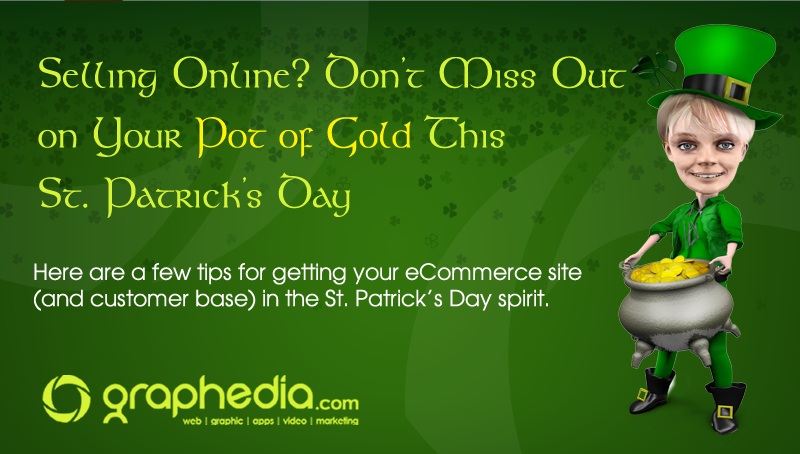
When you think of major holidays for eCommerce websites, you probably think of Christmas, Valentine’s Day, and Mother’s Day. Most people wouldn’t think of St. Patrick’s Day as a holiday people spend a lot of money on. However, according to the History Channel, more than $4.14 billion dollars are spent on St. Patrick’s Day in the U.S. alone. With some 80 million people around the world with Irish ancestry, this holiday is one online retailers simply can’t afford to ignore. Sure isn’t it great to be Irish.
But what can you do to make sure you don’t miss out on your pot of gold?
Here are a few tips for getting your eCommerce site (and customer base) in the St. Patrick’s Day spirit.
 Be Creative
Be CreativeWhile millions of pints of Guinness are consumed between St. Patrick’s Day and the night that follows, it doesn’t mean you need to focus solely on a few aspects of the celebration to create a hit. What would customers outside of Ireland like to buy, some authentic Irish item, novelty items, Irish Gift Hampers, Handmade Irish Goods etc etc. Advertise anything you can that works with the celebration, from fun hats and shirts, to gadgets
Think about how many people are going to be buying clothes, gadgets, and party favors to celebrate the night, before the celebration even begins. Use this as inspiration to bring people to your eCommerce site.
What do you think of when you think of St. Patrick’s Day? For most, the color green comes to mind immediately. Of course every business out there is going to be going green in early March to show that they’re embracing the Irish. While adding green accents is certainly a good idea, don’t overdo it. Changing your website’s entire color scheme is probably a bit too much (I know we do it, but we are different ). Instead, add splashes of green here and there where it fits. Likewise, you don’t need leprechauns or pots of gold all over the place (Unless you are doing something really clever & Creative with them, like what we do, we convert all staff images into Leprechauns, and then use these as part of the marketing message).
Being lucky is associated with St. Patrick’s Day, so try to work that in somewhere. Luck is considered a positive attribute, and connecting that to your brand can help increase sales. Use the keyword “Lucky” for your discount code or work in the number seven, which is considered a lucky number. Offer seven percent off or put some products on sale for €7. Four Leaf Clover, Buy three items get the Fourth for Free
While people may not buy as many gifts on St. Patrick’s Day as they do for Christmas or Valentine’s Day, a sale is still going to bring in extra revenue. Have a weekend sale featuring anything related to St. Patrick’s Day. Remember to advertise that sale on all of your social media, too.
Don’t be afraid to get creative and come up with unique ways of celebrating this holiday!
Some of our St Patrick’s Day Marketing we ran on Twitter, Facebook & Instagram, Don’t forget to follow us to see all our shenanigans


All of us here at Graphedia are conscious of security when it comes to using the Internet. They say that practice makes perfect, and we completely agree. That is why we are constantly improving on our techniques to practices to be bets at what we do. That’s how we can spot a dodgy site from a mile away. Yet, we understand that some of our customers and even our customer’s customers may not have the time to keep up with all the security changes that are going on.
We are not the only company who think this way, Google are also very proactive in protecting their customers from threats on the Internet. One of their latest protection ideas revolve around their web browser – Google Chrome. Beginning January 31st, they are making some subtle changes to the way Chrome recognises websites and how secure they are.
 SSL stands for “secure sockets layer” and is a form of security for sites that handle sensitive information such as customer names, phone numbers, addresses and credit card numbers. It creates a secure connection between a customer’s web browser and the server of the company they’re interacting with. Here’s an example. Let’s say you need to talk to your friend about some personal conflicts going on within your life. Would you rather talk to them in public where you run the risk of people overhearing you or would you rather have your conversation in private? An SSL gives the company and the customer the ability to communication and share information, in private.
SSL stands for “secure sockets layer” and is a form of security for sites that handle sensitive information such as customer names, phone numbers, addresses and credit card numbers. It creates a secure connection between a customer’s web browser and the server of the company they’re interacting with. Here’s an example. Let’s say you need to talk to your friend about some personal conflicts going on within your life. Would you rather talk to them in public where you run the risk of people overhearing you or would you rather have your conversation in private? An SSL gives the company and the customer the ability to communication and share information, in private.
On current versions of Chrome, when you visit a website without an SSL certificate you will see a very discrete exclamation mark beside the website address (picture below).

This is not overly obvious to the end user, but changes being rolled out in version 56 are a little more obvious. As you can see from the below picture, the basic exclamation mark has morphed into a more obvious “Not Secure” message.
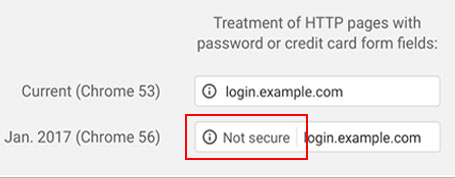
Google are not stopping there, in future versions, they plan on making more changes to Chrome. One of those changes will see the new “Non Secure” message being made even more prominent by making it a bright red font to grab your attention.
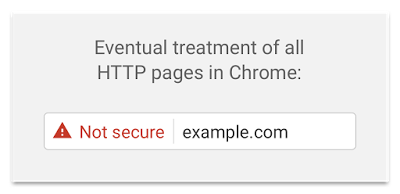
Yes, I’m afraid so – it will have implications for all websites that do not have an SSL certificate (only when users are using Google Chrome 56+). While your sites will continue to function normally, your users will see these security notices in their browser. Some users may choose to ignore them, but the fact of the matter is, everyone is concerned about security. This means that as time goes by, users will start to get uneasy when visiting your site and eventually avoid your site altogether.
Loads – absolutely loads.
There sure is, but it will involve the obvious – purchasing an SSL certificate for your website.
Contact Niall here in Graphedia and he will fill you in on how to go about getting one for your website.
Source: Google Security Blog
Other Links of Interest
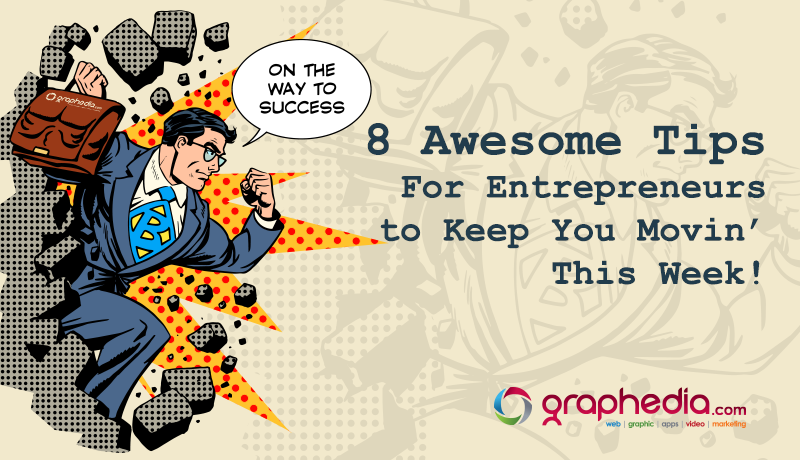
For most of us in business, entrepreneurship could be defined like this: “I don’t have a 9-5. I have a when I open my eyes to when I close my eyes”…
Or like this…
“I am the maker of my products & services, the marketer, the accountant, the head of HR, the tax guy and the lunch lady!”
There are, however, some awesome pearls of wisdom that have been passed down by the entrepreneurial greats along the way. And taking heed of those pearly words, could just make that path a little less crazy and complicated!
Steve Jobs: “Have the courage to follow your heart and intuition. They somehow know what you truly want to become”
Richard Branson: “If someone offers you a great opportunity and you’re not sure you can do it, say yes – then learn how to do it later”
James Dyson: “While Developing my vacuum, I went through 5126 failed prototypes and my life’s savings over 15 years. But the 5127th prototype worked, and the Dyson brand became the best-selling bagless vacuum brand in the United States”
Henry Ford: “When everything seems to be going against you, remember that the airplane takes off against the wind, not with it.”
Timothy Ferriss: “Focus on being productive, instead of busy”
Yoda: “Do or do not. There is no try!” …(Yes, yes, we know Yoda is technically not an entrepreneur but he is one of the greats, so he had to make an appearance in our opinion!)
Mark Zuckerberg: “If you just work on stuff that you like and you’re passionate about, you don’t have to have a master plan with how things will play out.”
Bill Gates: “The first rule of any technology applied in a business is that automation applied to an efficient operation will magnify the efficiency. The second is that automation applied to an inefficient operation will magnify the inefficiency”
 And we also wanted to add our own note on the great Bill Gate’s words on automation. You see, at Graphedia, getting our clients more online leads and sales is our business and let’s just say that business is gooooood! 😉
And we also wanted to add our own note on the great Bill Gate’s words on automation. You see, at Graphedia, getting our clients more online leads and sales is our business and let’s just say that business is gooooood! 😉
We believe that if you are following the sage advice above and you are working on something you are passionate about, you have a great product or service and an efficient business, then automation of your business is a step that can take your business to the next level and beyond.
What do we mean by automation? Well, its simple really, we mean driving warm/interested leads to your website and turning those leads into sales for your business through the use of online sales funnels, SEO, paid traffic and more.
…Essentially making sales while you sleep!!
P.S. We have a great summer offer running right now – sign up to 6 months of Google Adwords with us and receive a FREE €90 google adwords voucher! (We’re nice like that!!) Grab ‘em while they last.